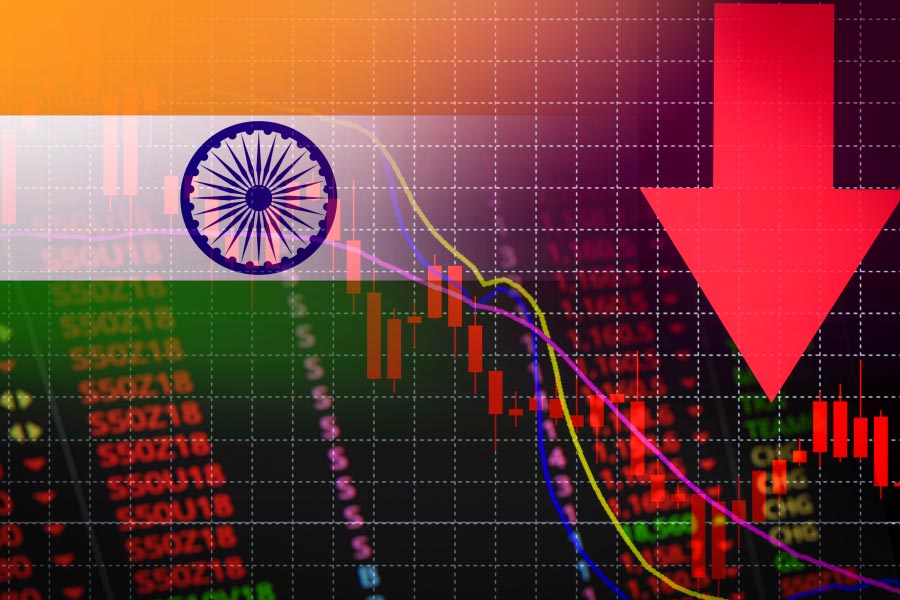The India VIX, a measure of market’s expectation of volatility over the near-term, hit a 52-week high on Tuesday as election uncertainties continue to occupy investor minds.
Reflecting the uneasiness among market participants after four phases of polling, the NSE’s India VIX hit a 52-week high of 22.30 and settled at 21.81, a gain of 6.23 per cent.
In just one month, the volatility index has jumped over 62 per cent as the markets fretted over lower voter turnout, indicating an unfavourable verdict for the ruling party.
Resuming after a day’s break, stocks ignored the record close at Nasdaq to trade in alternative bouts of buying and selling.
The 30-share Sensex opened lower at 73842.96 and fell nearly 244–points to hit a low of 73762.37.
It rebounded to hit a high of 74189.19, only to give up on the gains and end 52.63 points over the previous close at 73953.31.
The broader Nifty of the NSE closed higher 27.05 points or 0.12 per cent at 22529.05. The markets were closed on Monday because of the Lok Sabha Polls in Mumbai.
Despite the lower close, the combined market capitalisation of BSE-listed companies hit the $ 5-trillion milestone in intra-day trades. The market cap at the end of trading was $4.97 trillion.
In less than six months, the market cap jumped to $5 trillion from $4 trillion.
“The domestic market experienced a sideways trend and concluded on a flat note Monday, halting a three-day streak of gains as cautious comments from US Fed officials weighed on investor sentiment. As the general election approaches its final stages, volatility is expected to remain elevated.
Valuation alert
Kotak Institutional Equities has cautioned that the valuations of numerous Indian companies are unsustainable.
The domestic brokerage highlighted that 104 companies are trading at over 50 times PE, while nine companies are trading above 100 times PE.
Companies will require sharper and higher growth rates over a shorter period to justify very high P/Es. A 100X P/E company, which may be in the growth phase over the next 40 years, will need to report an earnings CAGR of 20 per cent over the next 20 years and 9 per cent CAGR over the subsequent 20, the brokerage said.
If the industry’s growth phase were to be shortened by 20 years, required growth rates will be even higher.
“Even if we assume stable market structure and stable profitability, the particular sector will then require becoming 200X in the first scenario and 30X in the second one. Only a few sunrise sectors may pass this small test,” Kotak said in its latest note.










